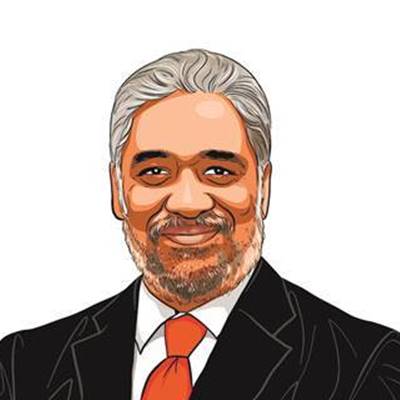Opinion Pick a new orbit
Three recent developments the resurrection of the controversy over the yield of Indias sole hydrogen bomb test in 1998...
Three recent developments the resurrection of the controversy over the yield of Indias sole hydrogen bomb test in 1998,the reports on the expansion of Pakistans atomic arsenal and the renewed apprehension about American pressures on various international arms control treaties have seen a nervous New Delhi walk the well-trodden nuclear ground all over again. Indias obsession with debating the familiar prevents it from addressing new challenges.
In the late 50s and early 60s,when China was racing to become a nuclear weapon power,India devoted its energies to promoting global nuclear peace. One would have thought the border conflict with China in 1962 and Chinas first nuclear test in October 1964 would have cured India of its nuclear non-sequiturs.
Instead,India embarked on a diplomatic campaign for a nuclear non-proliferation treaty. When India did respond finally in 1974 with a nuclear test of its own,it chose to call it a peaceful device and did nothing to launch a nuclear weapons programme.
Having broken up Pakistan in 1971 and conducted a nuclear test in 1974,India did not anticipate the response of Islamabad and Beijing,who had no reason to buy into New Delhis metaphysics on Pokharan-I. As New Delhi stood up to international pressures,Beijing decisively assisted Pakistan in acquiring nuclear weapons and missiles.
After Pokharan-I,India wasted nearly a quarter century posturing on universal disarmament and non-discriminatory non-proliferation,before testing again,declaring itself a nuclear weapon state and seeking nuclear reconciliation with the world.
When then-US President George W. Bush offered a sweetheart deal that would allow India to keep its nuclear weapons programme and regain access to the global nuclear market without signing the nuclear non-proliferation treaty,India spent three years agonising if it was a gift horse or a Trojan horse.
The story of Indias nuclear iner-tia continues with the current debate on the fizzle. Only one good may come out of the debate burying the proposition that everything a scientist says must be true. As our scientists argue viscerally with each other,it should be quite obvious that science policy is as much about politics personal,institutional and ideological as it is about science.
The arguments about the fizzle are interesting but do not alter the fundamentals of the Indian strategy of nuclear deterrence,which rests on the ability to retaliate with nuclear weapons. The hydrogen bombs main distinction is the massive size of the explosion it offers. The business of nuclear deterrence,however,is all about the certain delivery of the bang and not its size.
On Pakistan too,Indias real problem is not with the size of its nuclear arsenal. It is our inability to deter Pakistan from running its unconventional war of terror against us. Pakistan is supremely confident that its nuclear arsenal irrespective of its size has neutered
Indias conventional military superiority and New Delhis ability to punish Islamabads transgressions.
Nor does the H-bomb debate have anything to do with Indias position on testing nuclear weapons or signing the Comprehensive Test Ban Treaty. The decision to test was and will always be a political one. At this stage,India has no incentive at all to break the current de facto moratorium on nuclear tests being observed by major powers. That context would of course change if Beijing,Moscow or Washington resumes testing of nuclear weapons.
On the presumed American pressure to sign the NPT,CTBT,and the Fissile Materials Cut-off Treaty,the problems are all in our mind. If a much weaker India could not be coerced into signing the treaties it did not like between the 60s and 90s,where is the question of a rising India signing on the dotted line now? Must India jump every time the UN says something about universalising the NPT? Should we press the US to caveat all its references to NPT with a clarification that this does not apply to India? Cant India differentiate between international rhetoric and policy?
But even a paranoid has enemies. There are many second order nuclear issues that our security establishment must address and resolve; but those are not the ones being debated today.
One is about the ability of the DAE and the DRDO to keep our nuclear arsenal in good trim,and ensure its safety and reliability. New Delhi must ask for a review of and full support for plans to create computer simulation of nuclear weapons testing and design. Instead of agonising over the H-bomb fizzle,New Delhi and Mumbai must put more resources to fusion research,especially the one involving high energy lasers.
Rather than worry about the CTBT,we must ask if the DAE and DRDO have the ability to conduct sub-critical nuclear tests that are legitimate under the treaty. And if they do,what is holding them back? Is it the absence of political will? On the FMCT,our speeches at New York and Geneva are less important than asking if the DAE makes the best use of its current stockpiles of unsafeguarded plutonium. It is about ending the extended delays in reprocessing accumulated spent fuel stocks.
None of these second order nuclear problems compares with our real challenges of deterrence. One is about preventing Pakistan from organising and supporting Mumbai-style terror attacks on India under the shadow of nuclear weapons. The other is about Beijings rapidly widening lead in missile and space technologies.
Addressing these challenges would necessarily involve a new national debate on what other great powers are calling the new nuclear triad stronger conventional deterrence,theatre missile defences and a sophisticated infrastructure that can respond to the emerging atomic threats. It is to that debate that India must now turn.
The writer is the Henry A. Kissinger Chair in Foreign Policy and International Relations at the Library of Congress,Washington,DC
express@expressindia.com



